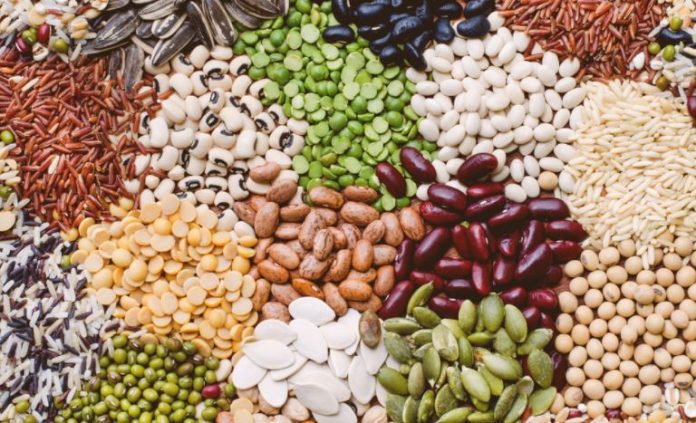In UP, farmers will get an additional grant of Rs 250 per quintal on paddy seeds and Rs 400 per quintal on wheat seeds. Yogi Adityanath cabinet has approved additional grant in Beej Gram Yojana for the coming financial year from the current financial year 2021-22.
Lucknow, Uttar Pradesh). Now farmers in Uttar Pradesh will get more subsidy on buying government seeds of paddy and wheat. The Uttar Pradesh cabinet headed by Chief Minister Yogi Adityanath has approved additional grant in the Beej Gram Yojana. Under the scheme, farmers will get an additional grant of Rs 250 per quintal on paddy seeds and Rs 400 per quintal on wheat seeds, which will be borne by the UP government.
Under the Beej Gram Yojana, less subsidy was available on the seed price of wheat and paddy as compared to other central schemes. The UP government will now compensate for the less grant received in comparison to other schemes. The Council of Ministers on Monday (August 16) proposed a new arrangement of special grant of the State Government for grant of grant equivalent to other central schemes on wheat and paddy seeds under Beej Village Scheme for the coming financial year from the current financial year 2021-22. Permission has been granted.
Under the Beej Gram Yojana, 50 percent of the price was given on the distribution of paddy and wheat seeds and a maximum of Rs 1,750 per quintal of paddy and Rs 1,600 per quintal of wheat was subsidized. Whereas in other similar schemes, farmers used to get a grant up to a maximum of Rs 2000 per quintal. But now a maximum grant of Rs 2000 per quintal will be available in the Beej Gram Yojana.
मंत्रिपरिषद ने चालू वित्तीय वर्ष 2021-22 से आगामी वित्तीय वर्ष हेतु बीज ग्राम योजना के अंतर्गत गेहूं एवं धान के बीज पर अन्य केंद्रीय योजनाओं के समतुल्य अनुदान की धनराशि देने हेतु प्रदेश सरकार द्वारा विशेष अनुदान की नई व्यवस्था प्रारम्भ करने के प्रस्ताव को अनुमोदित कर दिया है। pic.twitter.com/ZFfKJuceuf
— Government of UP (@UPGovt) August 16, 2021
Dr. SB Singh, Additional Director of Agriculture (Seeds and Farms) in the Agriculture Department of Uttar Pradesh told Gaon Connection, “It is a scheme funded by the Government of India, in which the farmer is given a subsidy (on subsidy) for one acre of farmland. In this scheme, there was less subsidy as compared to other subsidized seeds, in order to provide more benefits to the farmers, the state government has arranged additional grant from the state budget. So that more and more farmers use certified.
The Central Government’s Beej Gram Yojana is also included in the schemes for better and quality production, increasing the income of the farmers, and providing improved seeds to the farmers. Under centrally funded schemes like National Food Security Mission, Green Revolution expansion plan in eastern India, paddy and wheat seeds are given to farmers on grant under Integrated Food Development Programme.
According to the Agriculture Department in Uttar Pradesh, on an average, 58 to 60 lakh hectares of paddy (kharif) and 98 to 99 lakh hectares of wheat (rabi) are cultivated in the state every year. The productivity per hectare of wheat and paddy in the state is low as compared to many states including Punjab-Haryana. Therefore, there is a need to emphasize on the need of quality seeds and technology in the state.
Dr. SB Singh further explains, “In Uttar Pradesh, about 8 lakh quintals of seeds (foundation and certified) are given on subsidy every year. While 50 thousand quintals of quality (quality) seed is used. It also includes private sector seeds. Most of the farmers in the country use their own seed. 10-20 percent of foundation or certified seed is procured from the government or private. Under this scheme, the farmers are given good seed on subsidy. The methods of growing it are told so that Once planted, farmers can not only grow it in the rest of their fields but also give good seeds to other farmers.
How do farmers benefit from the Beej Gram Yojana? When asked about this, District Agriculture Officer of Barabanki district in UP, Sanjeev Kumar says, “There are technical assistants (technical assistants) at the Nyaya Panchayat level (group of some village panchayats) to take the scheme to the farmers. They are targeted every year. He then selects the farmers at the village level and provides them technical help from getting seeds to sowing and crop production. Farmers are taught the nuances of seed fertilizers.
The UP government said in its statement that due to less grant, farmers used to pay less attention to this scheme, but due to increase in subsidy, more farmers would be attracted towards it and the funds allocated from the central government would also be utilized 100%.


